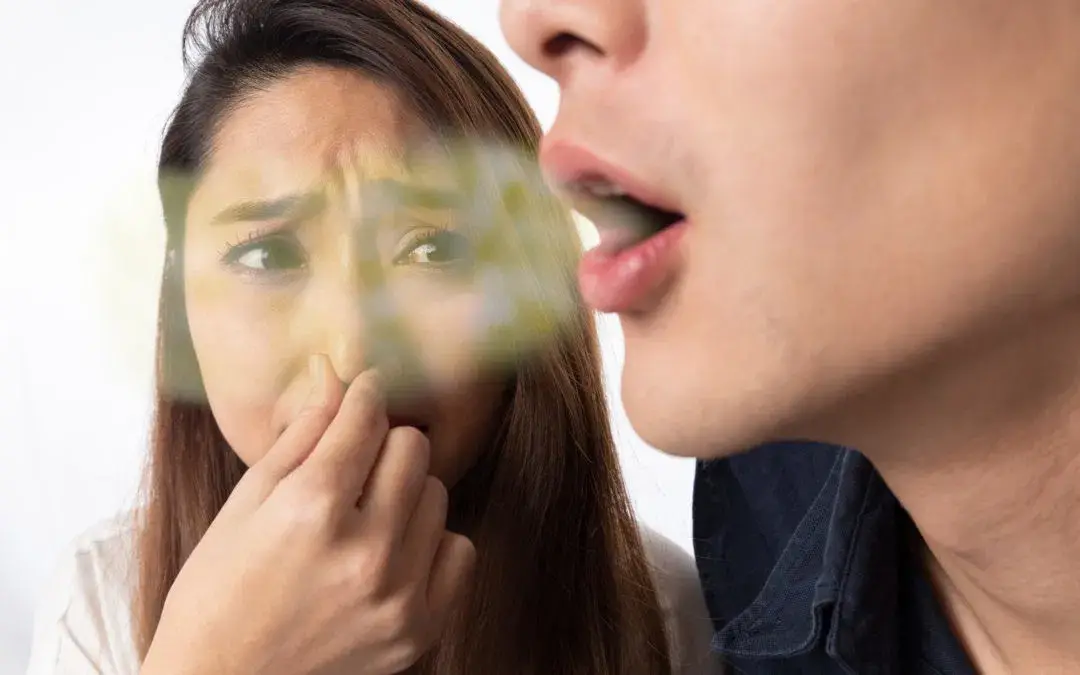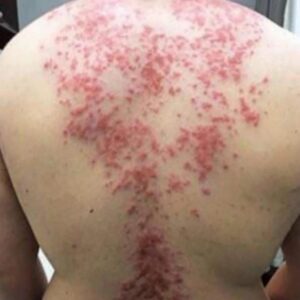Understanding and Addressing Halitosis: A Comprehensive Guide
Halitosis—commonly known as bad breath—affects up to 50% of the population at some point in their lives and can have significant social, professional, and psychological repercussions. While occasional mouth odor is normal, persistent or severe halitosis warrants investigation and intervention. This article explores the principal causes of bad breath, the oral bacteria most often implicated, key warning signs to monitor, evidence-based treatment strategies, and practical tips to maintain fresh breath long-term.
1. What Is Halitosis and Why It Matters
Halitosis refers to any unpleasant odor emanating from the oral cavity. Beyond being a minor annoyance, chronic bad breath can:
-
Undermine self-confidence and social interactions
-
Signal underlying dental or medical conditions
-
Diminish overall quality of life
Commonly, odors arise from volatile sulfur compounds (VSCs) such as hydrogen sulfide, methyl mercaptan, and dimethyl sulfide—byproducts of anaerobic bacterial metabolism. Although VSCs are often produced in the mouth, systemic diseases (e.g., diabetes, liver or kidney failure) can also contribute. Distinguishing between oral and non-oral (extra-oral) causes is crucial for targeted treatment.
2. Primary Oral Causes of Bad Breath

While halitosis can originate from multiple sources, 90% of cases stem from intra-oral factors:
-
Bacterial Overgrowth and VSC Production
– Anaerobic bacteria colonize the tongue’s dorsum, periodontal pockets, and spaces between teeth.
– These microbes degrade proteins and release VSCs, producing the characteristic “rotten egg” odor. -
Periodontal (Gum) Disease
– Gingivitis and periodontitis create inflamed, bleeding pockets conducive to malodor-producing bacteria.
– As tissue destruction progresses, deep periodontal pockets harbor more anaerobes and debris. -
Tongue Coating
– A white or yellowish biofilm comprised of desquamated epithelial cells, food debris, and bacteria forms—especially on the posterior tongue.
– Studies show that tongue-cleaning can reduce VSC levels by up to 75%. -
Dry Mouth (Xerostomia)
– Saliva flushes bacteria and neutralizes acids; reduced flow allows microbial proliferation.
– Causes include medications (antihistamines, antidepressants), autoimmune disorders (Sjögren’s syndrome), and mouth breathing. -
Dental Caries and Ulcers
– Cavities trap food particles and bacteria; canker sores harbor inflammatory exudates.
– Both conditions contribute to a sour or malodorous breath.
3. Early Warning Signs: When to Suspect Bacterial Overgrowth
Monitoring your oral health daily can help detect conditions that foster bad breath. Key indicators include:
-
White or Yellow Coating on the Tongue
– A visible layer of debris and bacteria, especially near the back of the tongue, suggests an ideal VSC-producing habitat. -
Swollen, Tender, or Bleeding Gums
– Gingival inflammation indicates gingivitis; if left untreated, it can progress to periodontitis, deepening bacterial niches. -
Persistent Mouth Ulcers or Canker Sores
– Ulcerative lesions disrupt the mucosal barrier, exposing tissue to bacterial colonization and foul-smelling byproducts. -
Dry or Sticky Saliva
– A sensation of dryness, particularly upon waking or after medication use, correlates with reduced salivary clearance. -
Unexplained Metallic or Sour Taste
– Distorted taste perceptions often accompany elevated VSCs and bacterial metabolites.
If you notice any of these signs for more than two weeks, consult a dental professional for evaluation.
4. Key Oral Pathogens Implicated in Halitosis
Several bacterial species have been consistently associated with elevated VSC production and chronic bad breath:
| Bacterium | Role in Halitosis |
|---|---|
| Porphyromonas gingivalis | A principal periodontal pathogen; produces methyl mercaptan and other VSCs in inflamed gingival pockets. |
| Treponema denticola | Spirochete linked to advanced periodontitis; generates hydrogen sulfide and contributes to tissue destruction. |
| Fusobacterium nucleatum | Abundant in dental plaque; ferments amino acids into VSCs, fosters mixed biofilm communities. |
| Solobacterium moorei | Emerging evidence identifies this species as a potent VSC producer on the tongue’s dorsum. |
| Prevotella intermedia | Associated with gingivitis; produces both hydrogen sulfide and short-chain fatty acids that odorize breath. |
Eradicating or reducing these pathogens through mechanical, chemical, and professional interventions is the cornerstone of halitosis management.
5. Diagnostic Evaluation
A thorough approach to halitosis includes:
-
Clinical Examination
– Assessment of oral hygiene, tongue coating, gingival health, caries, restorations, and saliva flow. -
VSC Measurement (optional)
– Devices such as the Halimeter® quantify breath sulfur levels for objective monitoring. -
Microbial Sampling
– Tongue swabs or subgingival plaque cultures can identify predominant VSC-producing species. -
Medical History Review
– Evaluate for systemic conditions (e.g., diabetes, hepatic/renal insufficiency) and medications causing xerostomia. -
Referral When Indicated
– Persistent halitosis despite good oral care may warrant ENT evaluation for sinusitis, tonsillitis, or gastrointestinal referral for reflux.
6. Evidence-Based Treatment Strategies

6.1 Mechanical Debridement
-
Toothbrushing (Twice Daily): Remove plaque and food debris; use a soft-bristle brush and fluoride toothpaste.
-
Tongue Cleaning: Employ a specialized scraper or brush to remove the biofilm on the dorsal tongue; repeat daily.
-
Interdental Cleaning: Flossing or interdental brushes eliminate bacteria from proximal spaces inaccessible to a toothbrush.
6.2 Chemical Plaque Control
-
Antibacterial Mouthwash:
-
Chlorhexidine gluconate (0.12%): Gold-standard for reducing VSC levels; limit to 2–4 weeks to avoid staining and taste alteration.
-
Essential oils (eucalyptol, thymol, menthol): Over-the-counter alternatives with proven efficacy in lowering plaque and halitosis.
-
Cetylpyridinium chloride can also reduce VSCs, though less potent than chlorhexidine.
-
-
Zinc Compounds: Zinc chloride or acetate binds sulfur compounds, neutralizing odor.
6.3 Professional Dental Care
-
Scaling and Root Planing: Removal of subgingival calculus disrupts periodontal biofilms.
-
Polishing and Prophylaxis: Regular cleanings (every 6 months or more frequently for periodontal patients) maintain optimal oral health.
6.4 Systemic and Adjunctive Therapies
-
Antibiotics (e.g., metronidazole) for refractory periodontitis—used judiciously to avoid resistance.
-
Probiotics: Strains of Streptococcus salivarius K12 and Lactobacillus spp. may help restore a healthy oral microbiome.
-
Saliva Stimulants: Sugar-free chewing gum containing xylitol; prescription sialogogues (pilocarpine) for severe xerostomia.
7. Lifestyle and Dietary Modifications
7.1 Hydration
Adequate fluid intake (1.5–2 liters per day) supports salivary flow, dilutes bacterial metabolites, and promotes oral clearance.
7.2 Nutritional Choices
-
Crunchy Fruits and Vegetables: Apples, carrots, and celery mechanically cleanse teeth and increase saliva production.
-
Green Tea: Contains polyphenols with antimicrobial and anti-inflammatory properties.
-
Limit Sugary, Acidic Foods: Reduce bacterial fuel and enamel erosion; opt for whole grains, lean proteins, and dairy rich in calcium.
7.3 Tobacco and Alcohol Cessation
Smoking and excessive alcohol intake exacerbate dry mouth and harbor odor-producing compounds. Quitting tobacco and moderating alcohol significantly improve breath and overall health.
8. When to Seek Professional Help
Consult a dental or medical professional if:
-
Bad breath persists despite twice-daily brushing, tongue cleaning, and flossing.
-
You observe white or yellow tongue coating, bleeding gums, persistent ulcers, or dry mouth.
-
You experience symptoms of periodontal disease: gum redness, swelling, receding gums, or tooth mobility.
-
Halitosis is accompanied by other systemic signs (e.g., abdominal pain, heartburn, or respiratory symptoms), suggesting extra-oral origins.
Early intervention not only resolves halitosis but also prevents the progression of underlying conditions.
9. Maintaining Fresh Breath: A Daily Checklist
| Daily | Weekly | Monthly |
|---|---|---|
| Brush teeth (2×/day) | Replace toothbrush or head | Schedule dental checkups |
| Clean tongue (once daily) | Use antibacterial mouthwash (as directed) | Review medications (xerostomia risk) |
| Floss or use interdental brushes | Chew sugar-free gum with xylitol | Reassess dietary habits |
| Drink ≥8 glasses of water | Inspect for new ulcers/gum changes | Update treatment plan if needed |
Adhering to these practices fosters a balanced oral environment and minimizes halitosis risk.
Conclusion
Halitosis is rarely merely a cosmetic concern—it often reflects underlying bacterial overgrowth, periodontal disease, or systemic factors. By understanding the multifactorial origins of bad breath, recognizing early warning signs, and applying a combination of mechanical, chemical, and professional therapies, individuals can successfully combat persistent halitosis. Lifestyle modifications—adequate hydration, a balanced diet, smoking cessation, and stress management—further enhance oral health and breath freshness.
If self-care measures fail to resolve halitosis, prompt consultation with a dentist or physician is essential to identify and treat the root cause. With timely, evidence-based interventions, fresh breath is not only attainable but sustainable—empowering individuals to reclaim confidence and well-being in every interaction.






